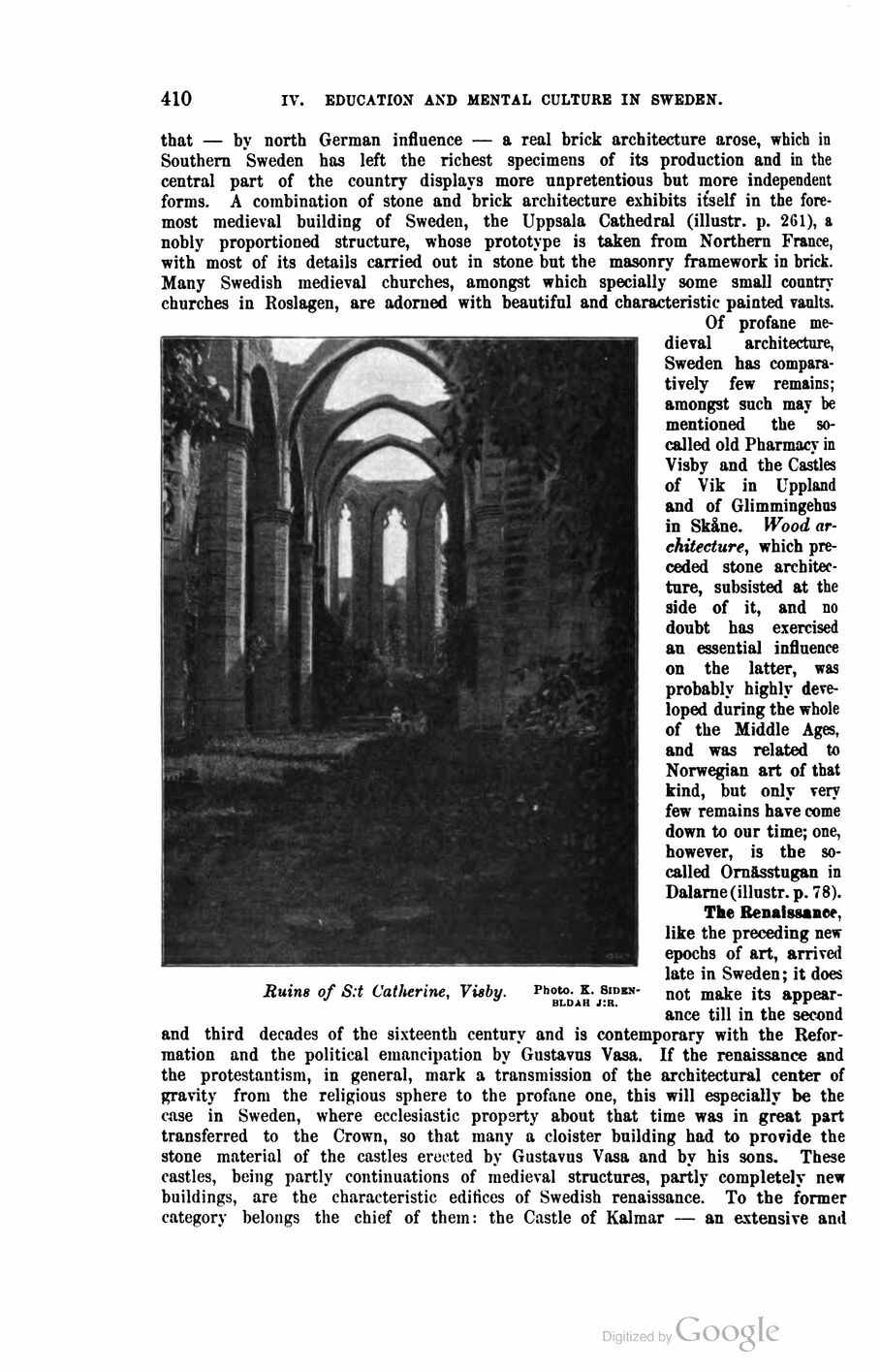
Full resolution (JPEG) - On this page / på denna sida - First part - IV. Education and Mental Culture - 9. The Fine Arts - Architecture, by F. Sundbärg, City Architect, Landskrona

<< prev. page << föreg. sida << >> nästa sida >> next page >>
Below is the raw OCR text
from the above scanned image.
Do you see an error? Proofread the page now!
Här nedan syns maskintolkade texten från faksimilbilden ovan.
Ser du något fel? Korrekturläs sidan nu!
This page has never been proofread. / Denna sida har aldrig korrekturlästs.
410
IV. EDUCATION AND MENTAL CULTURE IN SWEDEN.
that — by north German influence — a real brick architecture arose, which in
Southern Sweden has left the richest specimens of its production and in the
central part of the country displays more unpretentious but more independent
forms. A combination of stone and brick architecture exhibits itself in the
foremost medieval building of Sweden, the Uppsala Cathedral (illustr, p. 261), a
nobly proportioned structure, whose prototype is taken from Northern France,
with most of its details carried out in stone but the masonry framework in brick.
Many Swedish medieval churches, amongst which specially some small country
churches in Roslagen, are adorned with beautiful and characteristic painted vaults.
Of profane
medieval architecture,
Sweden has
comparatively few remains;
amongst such may be
mentioned the
so-called old Pharmacy in
Visby and the Castles
of Vik in Uppland
and of Glimmingehus
in Skåne. Wood
architecture, which
preceded stone
architecture, subsisted at the
side of it, and no
doubt has exercised
an essential influence
on the latter, was
probably highly
developed during the whole
of the Middle Ages,
and was related to
Norwegian art of that
kind, but only very
few remains have come
down to our time; one,
however, is the
so-called Ornässtugan in
Dalarne (illustr, p. 78).
The Renaissance,
like the preceding new
epochs of art, arrival
låte in Sweden; it does
not make its
appearance till in the second
and third decades of the sixteenth century and is contemporary with the
Reformation and the political emancipation bv Gustavus Vasa. If the renaissance and
the protestantism, in general, mark a transmission of the architectural center of
gravity from the religious sphere to the profane one, this will especially be the
case in Sweden, where ecclesiastic prop art y about that time was in great part
transferred to the Crown, so that many a cloister building had to provide the
stone material of the castles erected by Gustavus Vasa and by his sons. These
castles, being partly continuations of medieval structures, partly completely new
buildings, are the characteristic edifices of Swedish renaissance. To the former
category belongs the chief of them: the Castle of Kalmar — an extensive and
Photo. K. Sides-
i1i.da1i jib.
Ruing of S:t Catherine, Visby.
<< prev. page << föreg. sida << >> nästa sida >> next page >>